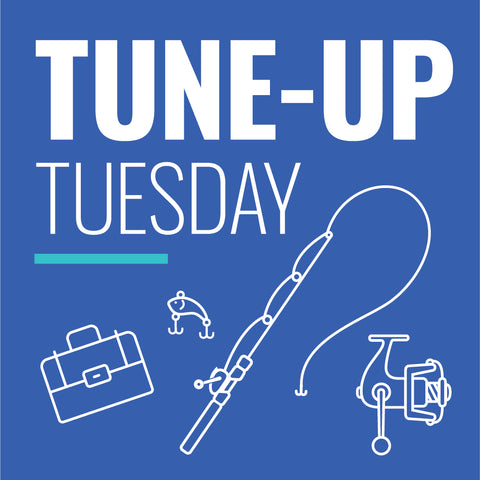Tune-Up Tuesday: Anatomy of a Spinning Reel
Posted on Aug 25, 2020
By Okuma® Staff

Anatomy of a Spinning Reel
Fishing Reels
In general, there are a several types of fishing reels. Spinning, Low Profile Baitcast, Round Baitcast, Conventional Star Drag, Conventional Lever Drag, Fly, Line Counter and so on. In this article I'll break down the anatomy of a spinning reel.

What is a Spinning Reel?
According to dictionary.com, a spinning reel is a fishing reel mounted on a spinning rod, having a stationary spool on the side of which is a revolving metal arm that catches the line and winds it onto the spool as a handle is turned, the metal arm being disengaged during casting so the line spirals freely off the spool, carried by the cast lure.
Simple right?
Ahead, I'll break down the basic components of a spinning reel. Lets start at the part closest to the rod and work our way out.
Reel Foot
The reel foot is the actual connection to your rod. This is the part that you will pace against the rod and attach to the rod by either a screw down, or screw up reel seat on the rod. It is the first and only point of connection to the rod. There really isn't any other function than that. You may also find some engraving on this portion such as model number or a manufacturers LOT number.

Reel Stem
Attached to the reel foot is the reel stem. This is the elongated part of the reel that comes down from the reel foot and goes into the reel frame.

Reel Frame
The Reel Frame is an extension of the reel stem. It will drop down and surround the body of the reel.

This particular reel has what is called Okuma's TCA- Torsion Control Armor. This is a split frame that prevents frame twist.
Now we'll make a move up to the top of the reel and work down toward the frame.
The Spool
The spool is a very important component of the reel. As per the definition, the spool stays stationary as the rotor revolves around it adding line as you turn the handle.
The spool is built to hold your line. Depending on the size of the reel you have, you will be able to get more line on bigger reels, and less line on smaller reels.
The spool also houses your drag system which we'll get into later.

The Rotor
As mentioned above, the rotor moves around the spool adding line as you turn the handle. Every time you turn your handle, the rotor will go up, then down adding the line in an even fashion. The faster you turn your handle, the faster the rotor will turn adding more line to your reel.

Bail Arm
Attached to the rotor is the Bail Arm. The Bail Arm primarily has two functions. One, to let the line out and Two, to prevent the line from leaving the spool.
When the bail arm is closed, you can turn the reel and gain line on to your reel. The bail works as a gate not letting any line out. When the bail arm is in the open position, line is free to come off the reel. You will open the bail arm when you want to let line out in casting or dropping bait straight down.

Drag Knob
Attached to the spool is the Drag Knob. What the drag knob does is adjusts the tension and pressure put on the drag washers. The drag is what slows down line being pulled off of the spool by a fish. You can set this very loose, or very tight. Depending on the type of reel you have, you may have one drag stack of washers, or a dual sided stack which in Okuma's case is called Dual-Force Drag.

Handle Arm
Now we've talked about turning the handle several times above, but the handle system consists of two parts. The handle arm, and the handle knob.
The handle arm is what is attached to the reel directly. It can be either a direct screw in system, or a through screw system. This can be made of graphite or aluminum materials depending on the level of reel you have.
Every time you turn the handle, the gears within the reel turn making the rotor turn, which ultimately puts line back on your spool.

The last part we will talk about is the Handle Knob, which attaches to the handle arm.
Handle Knob
The Handle Knob is your point of contact with the spinning reel. Your hand ultimately will be the one turning the handle and adding line to your reel.
Most spinning reels can be converted to left or right hand retrieve, so however you'd like to reel in fish, a spinning reel can do it for you.
The handle knob can be made of several materials like EVA foam, rubber or even aluminum.

There are several types and brands of spinning reels out on the market. You will find spinning reels designed for different applications such as long distance surf casting, or really compact designed for close quarters ice fishing. You'll even find spinning reels designed for big game tuna fishing like the Okuma Makaira series spinning reels.
Here is a quick video explaining all of the above.
I hope this gives you a little insight on the components and anatomy of a spinning reel. This is a very basic tutorial, but hopefully it will give you a better understanding of some of the terminology involved with a spinning reel.
To see all the great Okuma gear, be sure to visit okumafishingusa.com.
Dave Brown- Okuma Fishing Tackle




